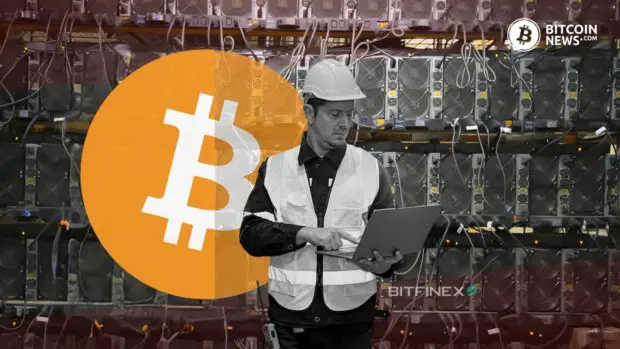The landscape of Bitcoin mining is undergoing a profound transformation, driven by the influx of institutional capital and the rise of publicly traded mining companies. As the industry braces for the next bitcoin halving and potential regulatory changes, the dynamics between corporate giants and independent miners are coming into sharp focus.
Next Bitcoin Halving: The Shift in Incentive Structure
Reports from Bitfinex highlight how Wall Street funding has fundamentally altered the incentive structure behind Bitcoin mining. Corporate entities, driven by shareholder returns, operate on a vastly different scale compared to smaller miners. This shift towards profitability over community ideals poses challenges to the decentralized vision of Bitcoin.
Smaller, independent miners face an existential threat as corporate miners consolidate power. The upcoming halving in April 2024 further exacerbates the challenges for independent miners, who lack the capital to negotiate favorable energy deals or invest in cutting-edge hardware. Bitfinex analysts emphasize the need for innovation and collaboration among independent miners to remain viable in this evolving landscape.
Related reading: Bitfinex Warns Bitcoin Halving Could Lead to Mining Centralization
Bitfinex analysts said in the report:
“For independent miners to remain viable, they will need to innovate and possibly collaborate […] Mining pools, for instance, offer a way for smaller players to combine their computational power and share in the rewards.”
Bitfinex suggests that the current situation in the mining industry could lead to larger publicly traded mining firms gaining dominance. These firms, equipped with substantial capital reserves and resources, are better positioned to navigate regulatory challenges, potentially overshadowing smaller players in the market.
Regulatory Uncertainties
The regulatory landscape adds another layer of complexity to the mining industry. Proposed regulations in the United States and the European Union could impose stringent measures to mitigate the environmental impact of mining, potentially increasing operational costs for miners. This regulatory environment may favor larger, publicly traded mining firms with greater resources to navigate compliance challenges.
The Role of Corporate Miners
Publicly traded mining companies have emerged as titans in the industry, mining thousands of bitcoin annually and showcasing the profitable potential of large-scale operations. These companies leverage strategic partnerships with energy producers and invest in sustainable mining practices, further solidifying their position in the market.
The Battle of the Miners
The dichotomy between corporate giants and independent miners encapsulates the complex narrative of the mining industry. While large-scale miners possess significant advantages in terms of resources and bargaining power, independent miners rely on innovation and collaboration to survive. Geographical diversification and sustainable practices are key strategies for both independent and corporate miners.
An excerpt from Bitfinex’s report reads:
“These corporate entities, with their focus squarely on shareholder returns, operate on a vastly different scale and with distinct priorities compared to their smaller counterparts,”
Looking Ahead
The future of Bitcoin mining hinges on the ability of miners to adapt to changing market conditions and regulatory landscapes. While challenges abound, the spirit of decentralization encourages resilience and innovation within the mining community. The ongoing evolution of mining technology and strategic partnerships will play a crucial role in shaping the future of the industry.
Wall Street investment in corporate mining has changed Bitcoin mining incentives, report Bitfinex analysts, marking a significant shift in the industry.
The analysts note:
“As these companies grow and consolidate their position, the Bitcoin community watches closely to ensure that the network’s decentralized ethos and the principles of Satoshi’s game theory design remain intact, even as the mining landscape evolves,”
Notably, Satoshi, the creator of Bitcoin, foresaw a change is bitcoin mining landscape in the early days of Bitcoin. He stated that initially, most users would run nodes, but over time, it was expected that the network would rely more on specialists with server farms equipped with specialized hardware. These server farms would typically operate with only one node connected to the network, while the rest of the local area network (LAN) would connect to that single node.
Conclusion
As the Bitcoin mining industry continues to evolve, the battle between corporate giants and independent miners intensifies. While corporate miners dominate the market with their resources and scale, independent miners rely on innovation and collaboration to stay competitive. The upcoming halving and regulatory uncertainties further underscore the need for miners to adapt and innovate in this rapidly changing landscape.










